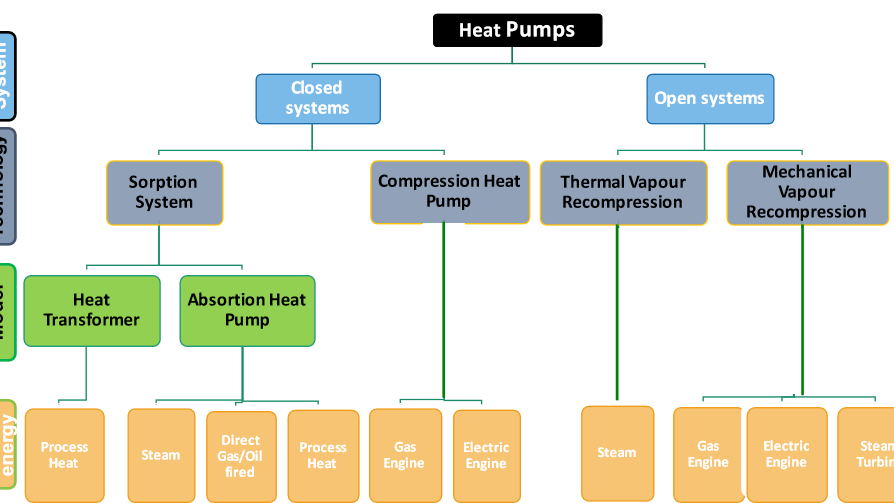 Energy Efficiency
Energy EfficiencyBusiness Practices
Energy efficient industrial pump systems: market potential, success factors and financing options
Summary
Market: The market for energy efficient pump systems in industry is expected to reach $16.3 billion by 2025. The market is highly competitive, with a number of companies offering a wide range of products and services. Some of the key players in the market include Grundfos, KSB Group, Xylem Inc., Sulzer, and ITT Inc.
Success factors: To take advantage of energy efficiency pump systems, companies should consider investing in new technologies and advanced control systems, as well as implementing regular maintenance and upkeep programs to ensure optimal performance and energy efficiency.
Financing: One popular financing option is energy performance contracting (EPC). With EPC, a company contracts with an energy services company (ESCO) to implement energy efficiency measures, such as installing new pump systems. EPC guarantees energy savings, and the company pays for upgrades through the savings generated by the project.
Open full article
Energy efficient industrial pump systems: market potential, success factors and financing options
Energy efficiency is a key concern for industrial operations, as reducing energy consumption can lead to significant cost savings and a decrease in environmental impact. One area where energy efficiency can be improved is in pump systems, which are used in a wide range of industrial applications such as water treatment, manufacturing, and mining. While the market is growing and competitive which also supports the development of technical and financing innovations, it is important for industry to keep in mind the key success factors of energy efficient pump systems to fully exploit their potential.
Following a brief overview of the market, top 5 key success factors are listed as well as various financing options. You can also find an number of links to more detailed articles or work EEIP conducted specifically on financing.
The market for energy efficient pump systems in industry
The market for energy efficient pump systems in industry is projected to grow significantly in the coming years. According to a report by MarketsandMarkets, the global energy efficient pump market is expected to reach $16.3 billion by 2025, growing at a CAGR of 6.2% during the forecast period 2020-2025.
There are several factors driving this growth.
- One is the increasing focus on sustainability and reducing carbon emissions. Industrial operations are under pressure to reduce their environmental impact, and energy efficient pump systems can play a major role in achieving this goal.
- Additionally, energy prices are on the rise, making energy efficiency an increasingly important consideration for companies looking to reduce costs.
- Another factor driving the market for energy efficient pump systems is technological advancements. New technologies such as variable speed drives (VSDs) and advanced control systems are making it easier for companies to optimize their pump systems for energy efficiency.
- Additionally, new energy efficient pump designs are being developed, such as those that incorporate low-friction bearings and impellers, which can further improve energy efficiency.
The market for energy efficient pump systems in industry is highly competitive, with a number of companies offering a wide range of products and services. Some of the key players in the market include Grundfos, KSB Group, Xylem Inc., Sulzer, and ITT Inc.
Top 5 key success factors for energy efficient pump systems in industry
To take advantage of energy efficiency pump systems, companies should consider investing in new technologies and advanced control systems, as well as implementing regular maintenance and upkeep programs to ensure optimal performance and energy efficiency.
The top 5 key success factors are
- Proper selection and sizing of the pump to match the system's requirements.
- Use of variable speed drive (VSD) technology to adjust the pump's speed to the changing flow demands of the system.
- Regular maintenance and upkeep of the pump to ensure optimal performance and energy efficiency.
- Implementation of control strategies such as demand-based control and automated shut-off when not in use.
- Use of energy-efficient pump designs, such as those that incorporate features such as low-friction bearings and impellers.
You can find some more details in these articles. They are a few years old but still highly relevant, a little series under the title “45% TCO – industrial pumps fight for efficiency”:
- Energy efficiency and maintenance
- Operator Driven Reliability concept (ODR)
Financing options for industry to implement energy efficient pumps systems
While implementing energy efficient pump systems delivers significant cost savings and environmental benefits, the upfront costs can be a barrier for some companies. Fortunately, there are a variety of financing options available to help companies overcome this obstacle.
Energy Performance Contracting
One popular financing option is energy performance contracting (EPC). With EPC, a company contracts with an energy services company (ESCO) to implement energy efficiency measures, such as installing new pump systems. The ESCO then guarantees energy savings, and the company pays for the upgrades through the savings generated by the project. This allows companies to implement energy efficient pump systems without having to come up with the upfront costs. While ESCO financing is rather popular in USA and China, Europe is still behind. EEIP worked in a consortium to deliver process to make such financing easier to implement, called ICP (Investor Confidence Project). More information here
- More than Ronaldo - How 5 innovative Portuguese companies drive energy efficiency
- 5 innovative UK energy efficiency project developers and quality assurance providers
- How Greece drives energy efficiency: 5 innovative companies
On-bill financing
Another financing option is on-bill financing, which allows a company to finance energy efficiency upgrades through their utility bill. The utility company pays for the upgrades, and the company repays the cost over time through their utility bill. This can be a good option for companies that may not have access to traditional financing options or who prefer to avoid large upfront costs.
Grants and rebates
Government grants and rebates are also available for companies looking to implement energy efficient pump systems. Many federal, state, and local governments offer funding for energy efficiency projects, which can help offset the costs of upgrading to more energy-efficient pumps. A good starting point are most often the post-pandemic economy recovery plans such as the EU Green Deal Investment Plan.
Loans and leases
For some companies, traditional financing options such as loans or leases may be the best option. Many lending institutions now have loan programs specifically tailored to energy efficiency projects, and leasing options also exist where the lessor owns the equipment, and the lessee pays for the use of the equipment over a specified period of time, which can be an option for companies that do not want to tie up their capital in equipment purchases.



